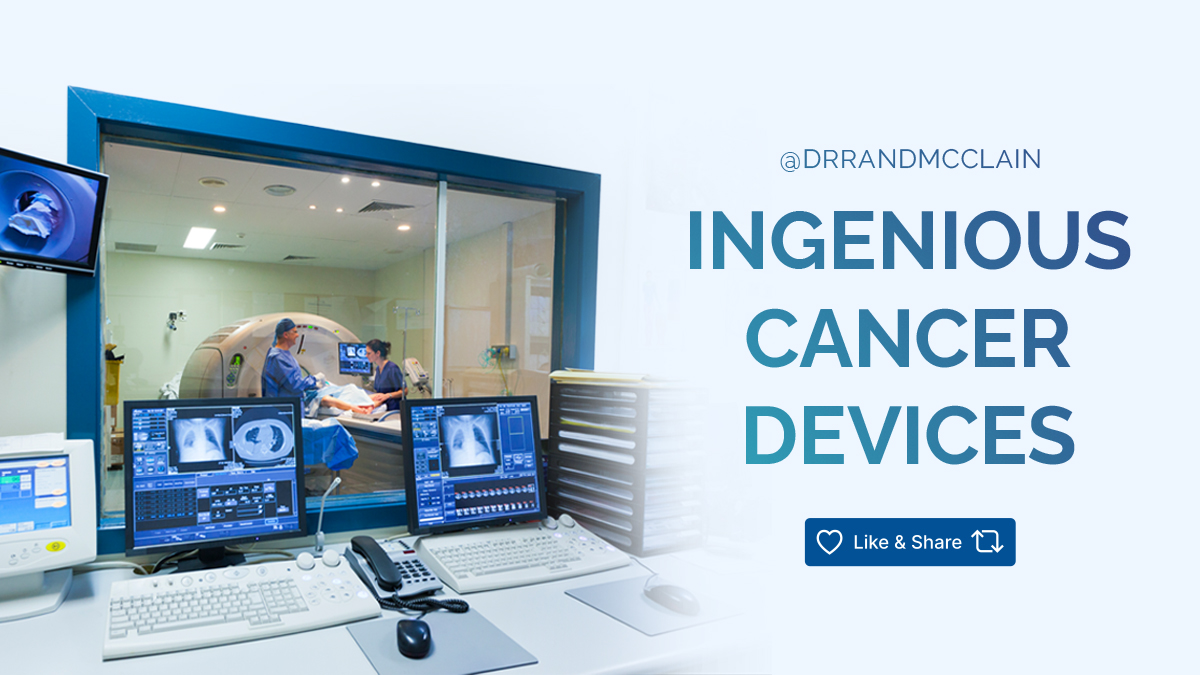Ingenious Cancer Devices

Many diseases are curable or at least manageable if caught early. This means that we can improve our health span if we monitor the signs and symptoms regularly and accurately. The good news is that technology has helped produce several tests and devices that can help us with these goals. The bad news is that awareness of them is low and access to them is limited.
Though I can certainly help raise awareness, it will take time, education, consumer demand, and technological advances before the promise of early detection and highly effective health monitoring are achieved.
So, let’s first focus on the medical devices that can aid in detecting cancer.
PSA Cancer Screening
Doctors have used the Prostate Specific Antigen (PSA) blood test for prostate cancer screening for years. Even though it’s still in widespread use, its effectiveness is questionable at best. It’s telling that the inventor of the test, Richard Ablin, has admitted that it can show false positives and negatives and, therefore, is unreliable.
Part of the problem is that a high PSA level may indicate prostate cancer, so it can save lives. But at what cost?
Biopsies of the prostate can result in incontinence and impotence. It is worth it when approximately 15% of men with normal PSA tests have prostate cancer and when a significant percentage with abnormal PSA levels don’t. We know that PSA levels can be elevated by a variety of factors unrelated to prostate cancer, from chronic prostatitis to bike riding before the test.
Yet the Urological Association still recommends PSA tests, and insurance companies still pay for it, incentivizing its use. For legal reasons, I’ve had to use it with patients.
The biggest problem I have with PSA tests is that a much better testing procedure exists: Multiparametric MRIs. Most people are familiar with Magnetic Resonance Imaging, which is a non-radiation-based, non-invasive test that uses a powerful magnet to align the body’s protons with the magnetic field.
The Mighty MRI
As the name implies, multiparametric uses sequences from three different techniques to provide a more detailed view than a traditional MRI. The three techniques—T2-weighted imaging, diffusion-weighted and dynamic contrast-enhancing imaging—enable doctors to identify tissue types in the prostate, receive functional and anatomical data, and track blood flow using a contrasting agent (cancer shows up more readily using the contrasting material). All this communicates a tremendous amount of information that allows doctors to gain more insight into what’s happening with the prostate as well as make better decisions based on what they see.
While some people complain about the noise and feelings of claustrophobia in an MRI tube (the patient must remain relatively still for 20 minutes or so), it is a safe and accurate procedure—far more accurate than both a PSA test and a digital rectal exam. The latter has little value since it’s such an imprecise, subjective test, and many doctors who administer it—palpating the prostate through the anus with a gloved finger—lack the years of experience necessary to detect subtle, telltale signs of problems with the prostate.
Because of false positives, people often undergo invasive procedures like a biopsy that can cause unnecessary harm. A multiparametric MRI can detect lesions as small as 5 millimeters, which is quite tiny. As a result, multiparametric MRIs can help physicians assess whether watchful waiting is a viable option when a cancerous lesion is spotted but is small.
Given all these benefits, why isn’t this technology widely available?
The Culprit in Slow Adoption of New Devices
Ultimately, the culprits are a lack of awareness and cost. The former is a problem not only for patients but for physicians—the information about multiparametric MRIs and prostate cancer communicated here isn’t widely known even in the medical community.

Because of this lack of awareness, insurance companies generally don’t cover the cost of this test, which can be considerable. Again, I hope that this situation will change as the medical community becomes more open to alternatives and aware of how these alternatives can save their patients’ lives or at least prevent painful and unnecessary procedures.
I know I’m harping on this point, but for a good reason: Early detection of cancer often turns it into a manageable, non-fatal disease. The problem has been that we catch cancer too late, and by then, it has spread, and it’s much more difficult to control.
Detecting Cancer Earlier
But what if we had a test that could serve as an early warning system for cancer? Such a test exists—or at least it did. Let me explain.
Dr. James Morre was a professor of biochemistry and molecular genetics. He, along with his wife, Dr. Dorothy Morre, began studying how an herbicide created uncontrolled growth in a plant. He assumed that if he could understand the process by which the plant grew abnormally, he might gain insights into how cancer grows and spreads.
ENOX2 is a protein that is found only in cancerous tissues and fetal cells. Dr. Morre identified this protein, and he spent 35 years studying it, publishing a textbook on ENOX2 proteins. Based on this extensive knowledge, he was able to invent a test that identified 25 cancers using ENOX2, including bladder, colon, esophageal, breast, kidney, lung, lymphoma, melanoma, ovarian, pancreatic, thyroid, testicular, and others. It was called the Oncoblot.
By using antibodies to the ENOX2 protein, the Oncoblot creates a plot on a Western blot that identifies the weight and PH of the ENOX2 protein. This process allows the Oncoblot to figure out the cancer of origin, and it can do so even for cancers as small as 1 millimeter—that’s roughly the size of the tip of a needle. In other words, it can find cancers in their early stages—even earlier than the Multiparametric MRI, which, even with the most advanced software, can only spot at 3 millimeters.
Given the almost miraculous capability of the Oncoblot test, then it’s tragic that it’s no longer available. Fortunately, another group has been working on replicating the Oncoblot process, and indications are that their process will be a new and improved version. This test can make a huge difference in how we treat cancer.
It’s been estimated that if everyone had regular colonoscopies starting at the age of 50, we could cure or prevent the vast majority of colon cancers. While it’s premature to make the same statement about an Oncoblot-like test, it potentially can have an enormously positive effect on treating and preventing a wide range of cancers if widely adopted. We need a lot more studies once this test is available, but it’s tremendously positive news from a health span perspective.